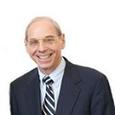I ended the last installment of this ongoing series by asking you to ponder a question: Was Virginia Tech shooter Seung-Hui Cho evil, or was it just his actions that were evil? One thing that might be helpful in answering this question is to take a look at a small sampling of other youngsters who have taken a similar path. What are the common elements in other school shootings?
- February 19, 1997: Evan Ramsey, taunted by classmates as "retarded" and "spaz," killed the principal and one student at Bethel High School in Alaska.
- October 1, 1997: Luke Woodham killed two girls and wounded seven others at Pearl High School in Pearl, Mississippi. Afterward, he said, "I killed because people like me are mistreated every day. I did this to show society: Push us and we will push back."
- April 20, 1999: Though revisionist "experts" have worked hard to recast the motivations of the Columbine High School killers, Eric Harris and Dylan Klebold, the fact is that they had long been bullied and scorned by classmates. The day before they went on their shooting spree, they sent an e-mail to the police saying that they had gotten their revenge against those who had derided them. Most significantly, they blamed parents and teachers for turning their children into "intolerant sheep." (I will be addressing this important comment in a later installment.)
- March 5, 2001: Charles Andrew Williams killed two students and wounded thirteen at Santana High School in California. After the shooting, one student purportedly said, ''He was picked on because he was one of the scrawniest guys. People called him freak, dork, nerd, stuff like that.''
- March 21, 2005: Jeffrey Weise killed seven people at Red Lake High School in Red Lake, Minnesota. Fellow student Ashley Morrison said of him, "Kids picked on him, but he didn't say much. We always suspected him of doing something, but nothing like this."
As I said, this is just a small sampling of school shootings in recent years. A list of all school shootings over the past fifteen years is much longer than most people might suspect - or want to acknowledge. (If you don't kill in record-breaking numbers, the media quickly loses interest and we move on to the next tantalizing catastrophe.)
Worse, more - many more - shootings are almost certainly on the way. If parents and educators stubbornly - or ignorantly - continue to do the same things, they are, indeed, insane if they expect to get different results. Which is why nineteen-year-old Robert Hawkins' murder rampage (nine dead, including himself) at an Omaha shopping mall on December 5 was no great surprise.
Some revealing excerpts from his suicide note: "I've been a piece of [expletive] my entire life." ... "It seems this is my only option." ... "I just want to take a few pieces of [expletive] with me." ... "Just think ... I'm gonna be [expletive] famous." ... "I've just snapped. I can't take this meaningless existence anymore." ... "I've been a constant disappointment and that trend would have only continued." (Another interesting comment that I'll address in a later installment.)
True, Hawkins attacked at a shopping mall rather than a school, but the elements at play were all too familiar. Note that he said in his suicide note, "It seems this is my only option." If that sounds like something you've heard before, it might be because Seung-Hui Cho said, in the videotape he left behind, "You forced me into a corner and gave me only one option."
Coincidence? I don't think so. Why do young, deranged mass murderers believe that their only option is to kill others? Or that others "forced" them to kill? Their logic may be psychotically rooted, but if we are genuinely concerned about our children's safety (and, in the case of Hawkins, our own safety), it is foolish not to try to understand the cause of such disturbed thinking.
In Installment V, we'll take a look at Cho's background to see if we can gain a better understanding of how a twenty-three-year-old college student could arrive at a point in his life where he felt he had no other option but to commit mass murder.
Copyright © 2008 by Tortoise Press, Inc. Reprinted by permission of the author.
Robert Ringer is the author of three #1 bestsellers, including two books listed by The New York Times among the 15 bestselling motivational books of all time.
To tap into his profound wisdom and life-changing insights on a regular basis, sign up for a FREE subscription to his one-of-a-kind e-letter, A Voice of Sanity in an Insane World, visiting www.robertringer.com.

Post new comment
Please Register or Login to post new comment.